Let’s make Injera – Ethiopian flat bread from fermented teff flour. Why, you ask? Well, why not? It’s a unique kind of bread tasting unlike anything I’ve ever tried; it’s fermented (and my ears perk when I hear this word); it’s exotic, and it’s easy to make. It’s not a bread to spread your butter on (although have no doubt that I tried that, and it worked to a degree); it’s rather a wrap or a “utensil” with which you can scoop up a stir fry, a stew, or a salad. I would characterize its taste as a curious mix of bland and sour; thanks to blandness it soaks in the taste of the food you use it with, and sourness adds an intriguing twist. If you are not convinced still, a few words about its nutritional facts. Or, if it’s just the recipe you are interested in, scroll right through.
Teff is unusually high in fiber; thanks to a small grain size, it preserves all its parts when milled into flour. Fermentation does interesting things to it. First and foremost, it eliminates almost entire sugar content and converts part of insoluble fiber into soluble. Let me quote two papers with analysis of teff fermentation.
Fermentation of teff flour is accompanied by a significant increase in nutritionally relevant soluble fiber, and by a decrease in free sugars. Whereas the lipid fractions remain essentially unaffected, proteins in teff flour are a target for the LABs mainly responsible of fermentation, as reported for sorghum flour. However, fermentation-related proteolytic events are altogether limited, and do not affect extensively those teff proteins that are most relevant to forming a stable network with other proteins in the system.
Particularly, sugar content went from 1.77% to 0.15%, with fructose, sucrose, and raffinose becoming nondetectable. Soluble fiber content went up by more than 50%, and total bacteria count, as you would expect from the fermentation process, multiplied from 50,000 CFU to 2,000,000.
(Molecular features of fermented teff flour relate to its suitability for the production of enriched gluten-free bread
Alessandra Marti, Mauro Marengo, Francesco Bonomi, Maria Cristina Casiraghi,
Laura Franzetti, Maria Ambrogina Pagani, Stefania Iametti
DeFENS University of Milan, Via G. Celoria 2, 20133 Milan, Italy. 23 December 2016)
Another source says:
Nutritional Importance of Teff Fermentation:
Teff grain contains less than 1% (528-842mg/100g) phytic acid and other inositol phosphates, which are strong inhibitors of Fe and Zn absorption [28]. Fermentation gives enjerra its sensorial characteristics, as flavour, aroma and colour. But the more important effect of teff fermentation is the increase in the nutritional content, because of the decreasing relationships of iron with phytates and of iron and tannins [16]. One study on content of zinc, iron, calcium and their absorption inhibitors in foods commonly
consumed in Ethiopia reported that amount of phytates in enjerra is considerably reduced to 35-76 mg/100 g (91-93% destruction) due to fermentation and the acidity nature of enjerra [28]. Microorganisms are able to produce various metabolites during the fermentation through their enzymatic action on the substrate [18] and antinutritional factors are also reduced [6, 8, 16, 29]. Indeed, the lactic acid and volatile fatty acids (C2
– C6) were reported as the major organic acids produced during fermentation and contributing to good aroma and sour taste of enjerra.
(PROBIOTIC POTENTIAL AND NUTRITIONAL IMPORTANCE OF TEFF
(Eragrostis tef (Zucc) Trotter) ENJERRA – A review). This paper is available here, in case you want to dive into study’s intricacies. This source also describes a more complicated process of teff fermentation; we are going to use much simpler way.
What you need: teff flour and water. Seriously, that’s it. For fermentation, that is. Oh, and time – count on fermentation to take 2-3 days, so plan in advance for when you are going to make the bread itself. Frying pan will be needed as well, and a pinch of salt and some baking powder won’t add much complexity to the entire thing, will they?
OK, let’s run over the steps, as few as this food requires.
RECIPE
- Combine 1 1/2 cups teff flour and 2 cups water (boiled and chilled to room temp) in a bowl or a glass jar holding up to 2 liters (quarts). Mix well and cover with paper towel or cloth; secure with rubber band.
- Leave to sit at room temperature away from sunlight. Stir twice a day to aerate.
- You should see visible bubble activity at some point; don’t worry, it’s quite normal. When it quiets down, you are ready to make your bread. 2-3 days is a usual length of the process.
- If a water layer formed at the top, carefully pour it out. Add to the batter 1/4 tsp salt and 1/2 tsp baking powder. Stir and let the batter sit 20-30 min. It will have a consistency of thin pancake batter.
- Preheat a frying pan (12-inch one works fine) on medium heat and add a few drops of oil. Pour about 1/2 cup of batter into the pan and tilt it to cover the bottom evenly.
- Watch the surface as bubbles (eyes) appear all over. Within a minute it goes from this
to this
to this
7. At this point, cover the pan with a lid. Steam it for 3-5 minutes. Take the pan off the heat and put your bread on a plate; cover with a towel or wax paper to separate it from the next injera that you start cooking. Depending on how thick you make it, you will get from 2 to 4 injera. This is how it’s going to look (this is a bit on a dark side after 5 minutes of steaming; many prefer to cook it for 3 minutes so it comes out lighter):
These “eyes” are not just an aesthetic feature of injera; they are also functional, as they allow it to soak the juices and taste of the dish for which you use injera as a utensil or a wrap:
You can roll them up or cut into pieces:
Here it is, used as a wrap with egg salad and a piece of bacon, with some kale thrown in for color:
It keeps on the counter for 2-3 days. You can try and toast it, although it’s non-traditional way to use it. Enjoy!
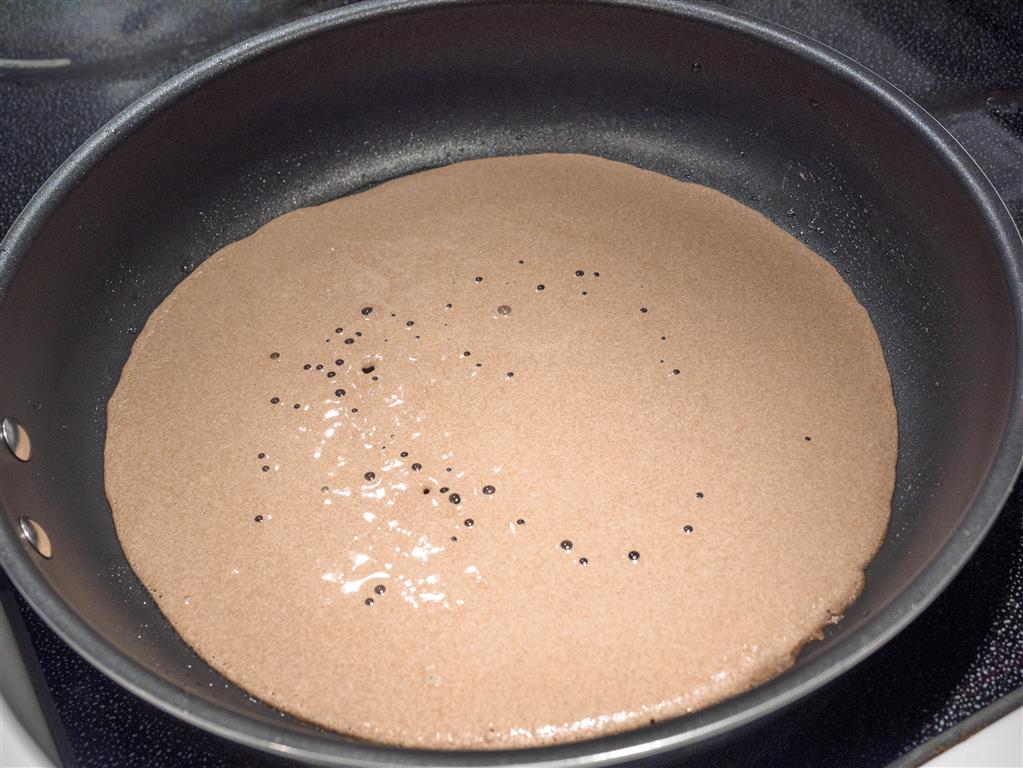
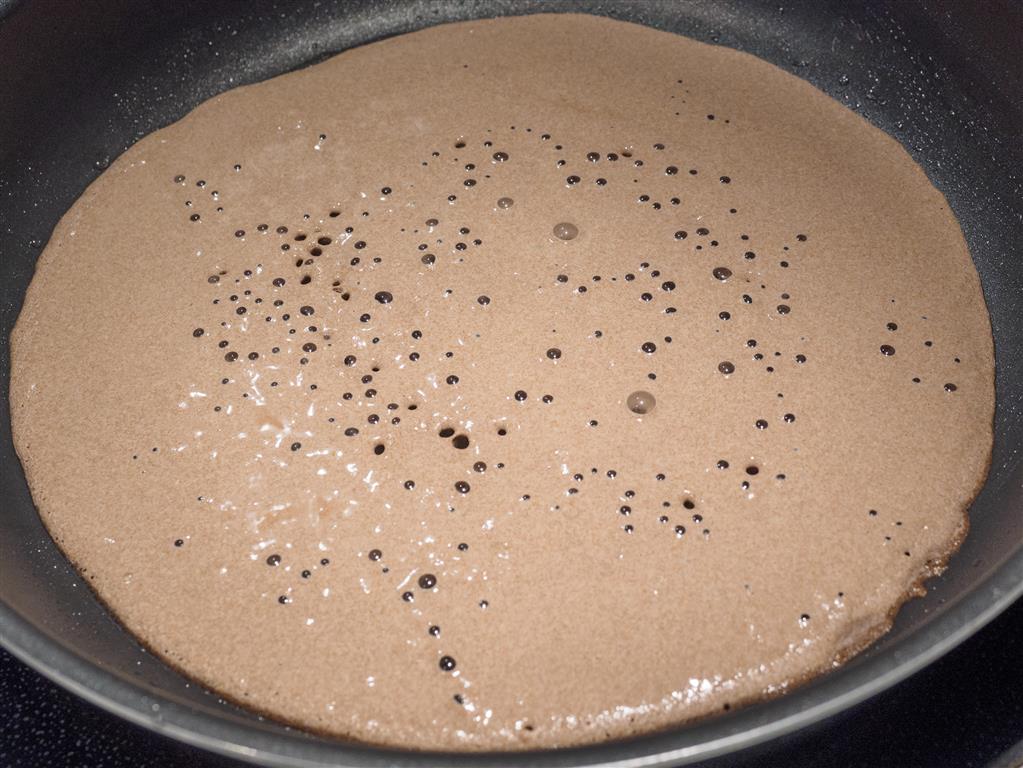
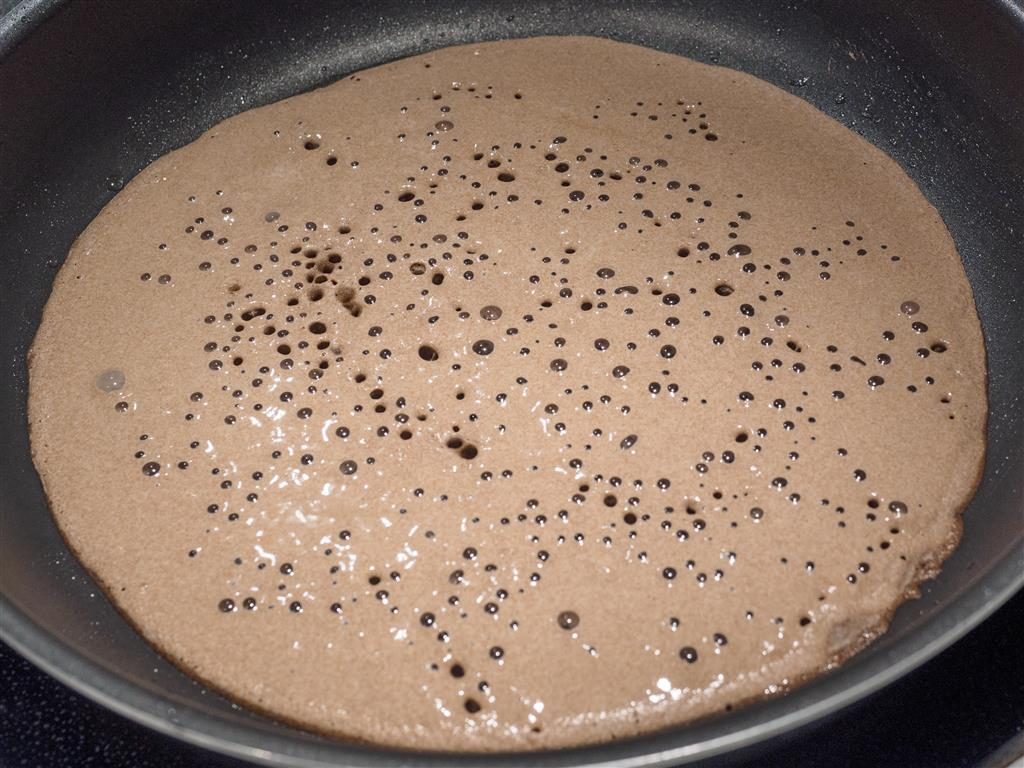
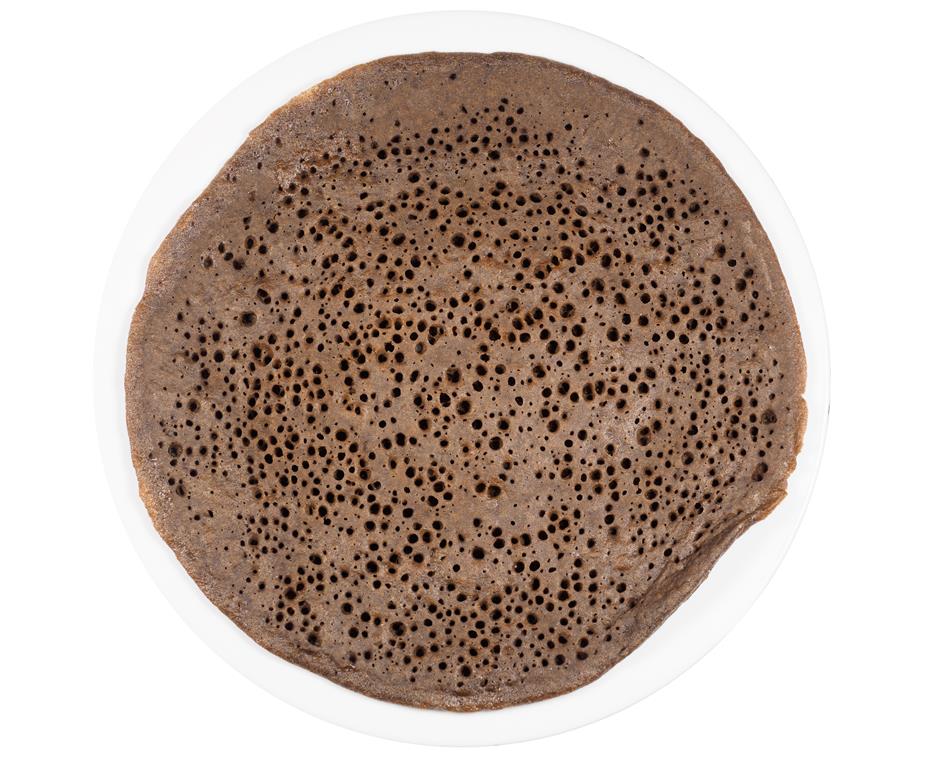

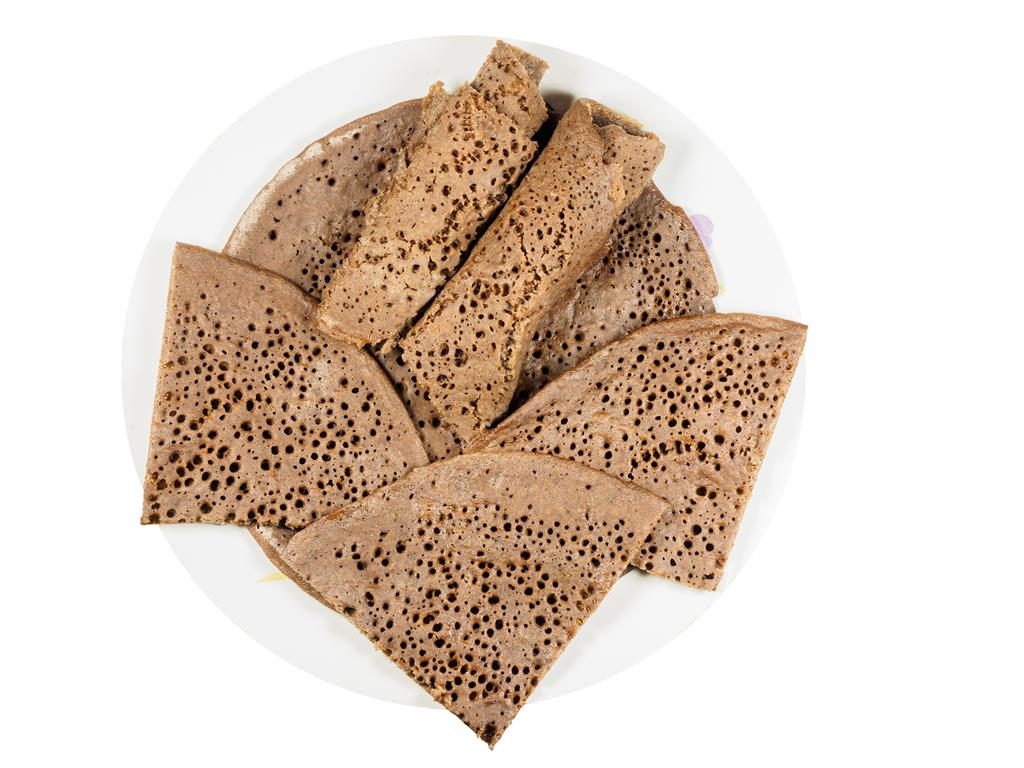
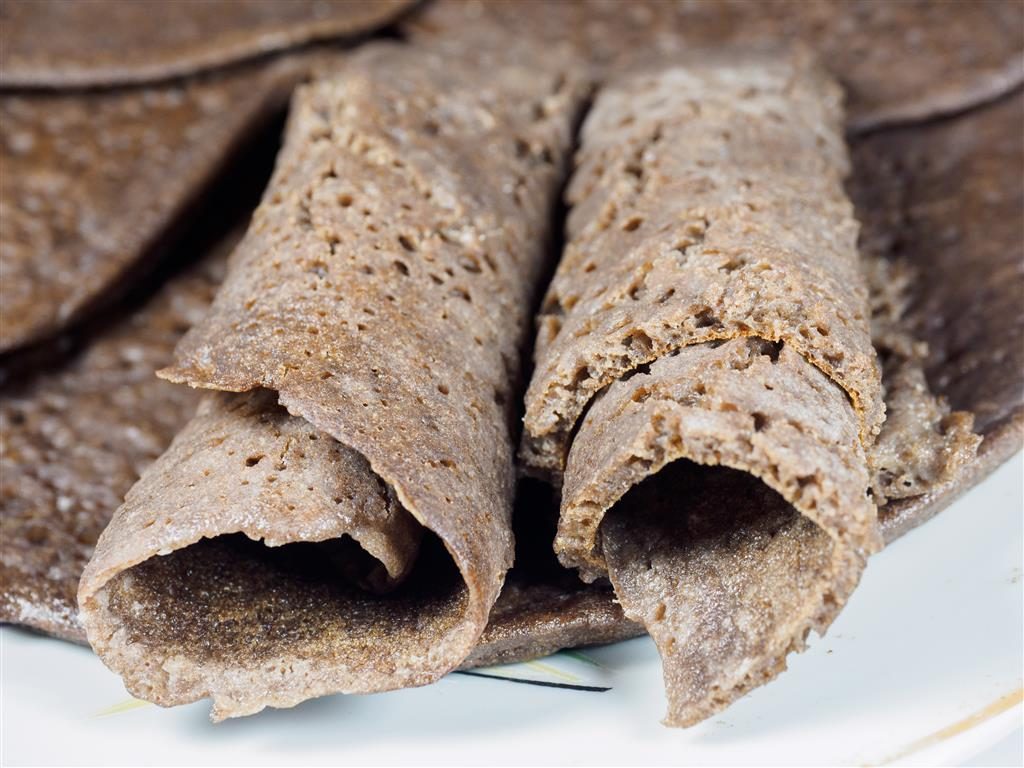
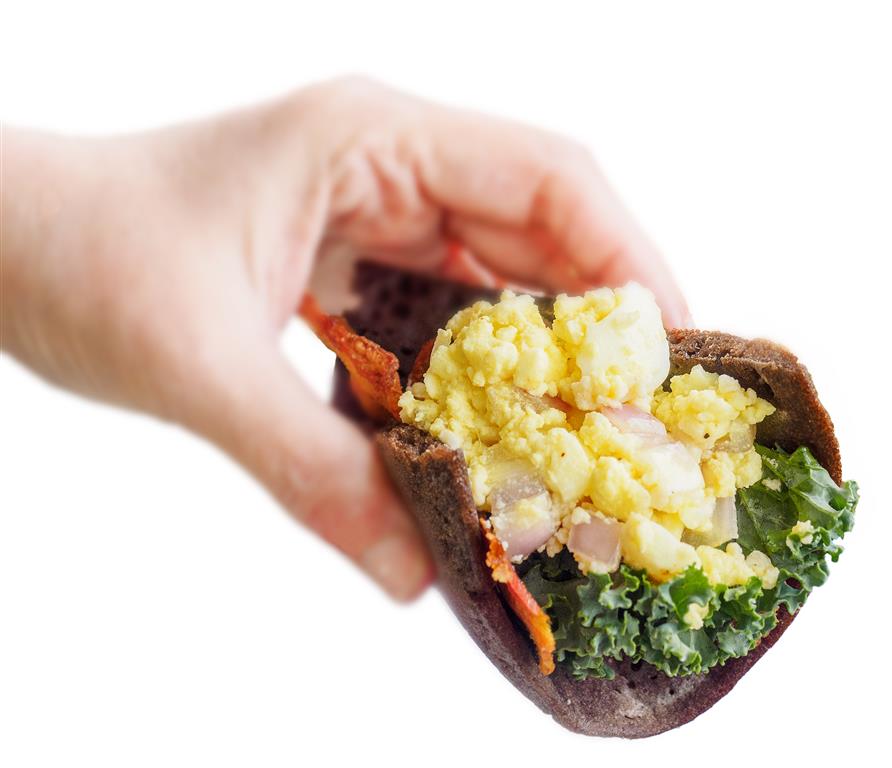

Am Ethiopian lady and I liked the way you explained and am on keto diet so can I use injera in a very moderation
Thank you for your feedback, happy you liked it!
can i use injera for my keto diet plan?
Certainly, just make sure you keep the carbohydrate content under your personal limit, be it 20 g/day or whatever number works for you.
I didn’t see the nutritional information for this recipe, do you have any idea how many net carbs there are in one 12” piece of injera?
here is a nutritional data for injera:
https://www.nutritionix.com/food/injera
I don’t know how accurate it is, due to natural variation in fermented foods there might be some range. As a ballpark, however, it should work.
I followed recipe 2 cups water and 1-1/2 cup Teff. Mixed it well before placing on stove to boil. The whole batch was stuck together and not watery at all. I couldn’t tell when it was boiling since it was so thick. So I guessed at it and set it on the counter to cool and will cover it in a glass bowl with cloth and set as your recipe states. Did I do it correctly?
Thanks.
Not really, sorry to say. You don’t boil the mix, you boil and chill the water and then mix it with teff flour